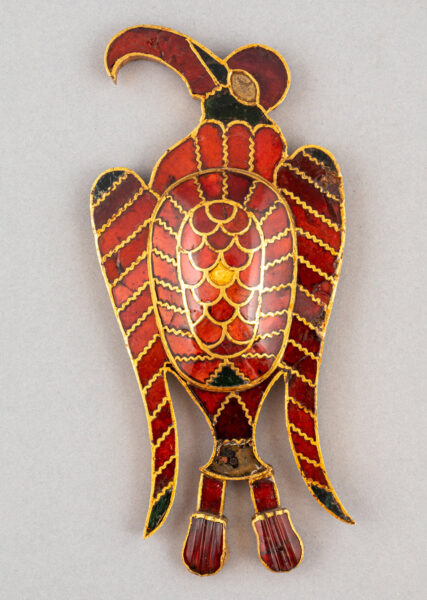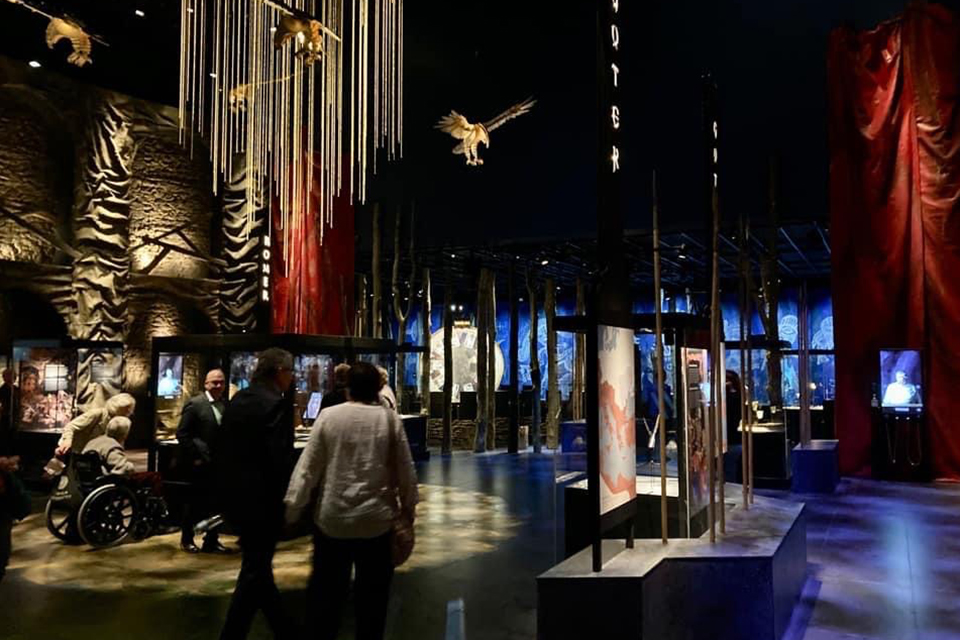A new special Exhibition – Out of Chaos – at Moesgaard Museum in Århus spotlights the Dark Ages between AD 300-600.

Also called The Migratory Period, The Dark Ages constitutes a scientific conundrum for historians, archaeologists and social scientists. The new special exhibition focuses on one of the most fascinating and complicated periods in Europe’s history when the mighty Roman Empire collapsed in the west, new warrior aristocracies emerged, and the foundations were laid for Europe as we know it today, constituted by independent nations, many of which were forged in the crucible of the “Decline and Fall of the Roman Empire”.
The special exhibition looks at the period of about 300 years, stretching from the late 4th century AD, between the fall of the Western Roman Empire and the dawn of the Viking Age. A time referred to as the Migration period due to its great wars, floods of refugees and territorial displacements, but also a period marked by a series of climatic and epidemic catastrophes in the 6th century.
The new exhibition explores the chaos out of which modern Europe was born.
“In this exhibition, we explore the history of one of the greatest crises ever in European history, a time when most of the continent was embroiled in violent change and unrest. Out of this widespread chaos emerged a wealth of peoples and identities, many of which are still recognisable in Europe today. In the exhibition, we hope to provide a deep historical insight into some of the differences and tensions that continue to shape our present and a perspective on the great historical consequences of major crises up through time. Something that is, unfortunately, extremely relevant right now,” says Mads Kähler Holst, director of Moesgaard Museum.
Huns, Goths, Romans and Scandinavians

Out of Chaos takes its point of departure in AD 376, the year when mounted Hunnic warriors drove out the Goths, forcing them to flee across the Danube and into the Roman Empire. This led to the Battle at Adrianople in 378, where the entire Eastern Roman Army was defeated and the Emperor killed. Following these events, the gates were opened up for the Goths traipsing through the Balkans and Italy, their sack of Rome in AD 410 and finally, their creation of the Visigothic kingdom in Toulouse. During the same formative years, Britain was formally abandoned, opening up for the later migration of Angles, Saxons and Jutes, which new studies claim were perhaps led by Danes from the Eastern Part of present Denmark and Sweden. Meanwhile, other groups of migratory Germanic tribes crossed into present-day France, Spain and, finally, Africa. Some forged the later Frankish kingdom, others (the Sueves) fashioned similar polities in Spain, while the Vandals settled in North Africa. Meanwhile, the Huns kept pushing into Western Europe, draining the Roman coffers for gold – directly through tribute and indirectly through the Roman’s need to pay barbarian mercenaries and war bands to fight for Rome against the invaders. One of the spectacular results was the vast hoards of gold sacrificed in the first half of the 6th century and witnessing to the quest for symbolic manifestations and displays of magnificence and splendour.
A particular question touched upon in the exhibition is the role of the Huns. Perhaps, the defensive earthwork Danevirke was built as a shield against the chaotic situation to the south? Recent archaeological excavations have dated the earliest rampart to the 5th century, and archaeologists have debated how far north the Hunns ventured.
The question remains – and has been hotly disputed by scholars, historians and archaeologists at least since the end of the 18th century – whether the “Fall and Decline of the Roman Empire” was caused by Roman decadence and economic implosion or by the external migratory forces arriving in the disguise of the Chinese “Xwu”, also called the Huns? Whatever the explanations offered – and a German scholar has listed more than 220 – we do know that out of chaos, a new order was born. Thus, a mighty empire became several kingdoms which, with time, developed into the nations we know today.
For this special exhibition, Moesgaard Museum has archaeological artefacts on loan from museums in Sweden, Romania and Hungary, as well as the National Museum in Copenhagen. These include impressive gold treasures from Romania, a Hunnic skull from Hungary and a warrior’s helmet from a boat grave at Valsgärde near Uppsala in Sweden. Out of Chaos is supported by Augustinus Fonden, Aage og Johanne Louis-Hansens Fond and Kroagerfonden.
SOURCE:
Press Release: Out of Chaos.
VISIT:
Out of Chaos
The Museum of Moesgaard
Moesgård Allé 15, 8270 Højbjerg, Århus, Denmark
12.11.2022 – 06.08.2023
